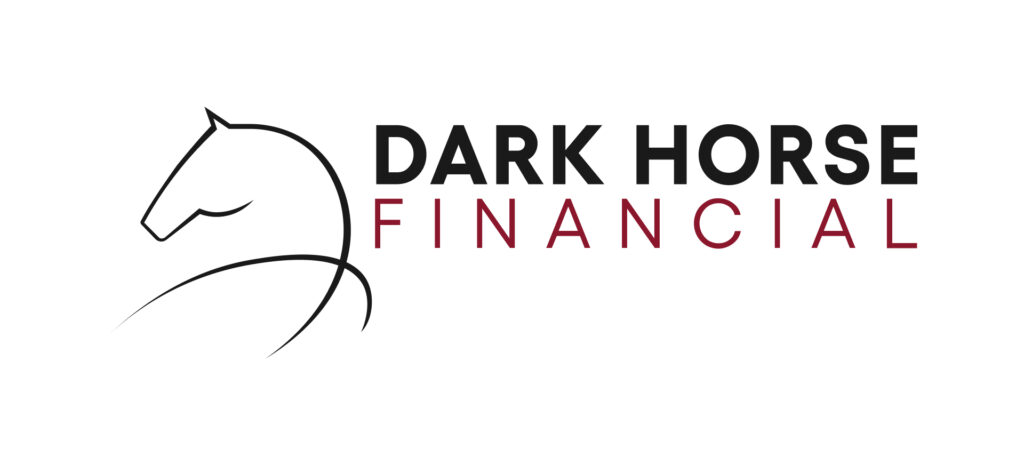Key Takeaways
- In Australia, home loans are secured loans that people use to buy a home, usually paid back over 25 to 30 years.
- There are many kinds of basic home loans, such as interest-only, fixed, variable, and split loans.
- Low doc home loans, construction loans, and bridging loans are other kinds of home loans.
- PAYG borrowers and self employed borrowers have different documentation requirements.
- The Loan-to-Value Ratio (LVR) determines how much you can borrow and if you need to pay Lenders Mortgage Insurance (LMI).
- LMI protects the lender when your deposit is less than 20%, but it can add thousands to the total cost of your loan.
- Offset accounts and redraw facilities are useful tools that can help you pay less interest and make extra payments whenever you need to.
- Making lump sum payments can save you money on interest and shorten the length of your loan, but be sure to read the terms of your loan to see if there are any restrictions.
- Getting pre-approval before looking for a house lets you know how much you can borrow and makes you a stronger buyer.
- Don't make common mistakes like borrowing more than you can afford, not paying attention to fees, or not looking into loan features or government programs.
- If you're self-employed or new to the real estate market, working with a mortgage broker like Dark Horse Financial can help you find better deals.
Buying a house is one of the biggest financial decisions most Australians will ever make. It’s important to know the basics of home loans if you’re a first-time buyer or looking to refinance. This will help you make informed choices that can save you time and money.
This guide goes over everything, including the different types of basic home loans, how your job type affects your application, and important terms like LVR, LMI, and lump sum payments. We also talk about what lenders want, how much you can borrow, and the minimum amount you need to borrow for a home loan in Australia.
What Is a Home Loan?
A home loan, also called a mortgage, is a loan that a bank or other lender gives you to help you buy a home. You agree to pay back the amount you borrowed (the principal) plus interest over a set period of time, usually 25 to 30 years.
Home loans are secured loans, which means that the property itself serves as security. If you can’t pay back the loan, the lender can take possession of the property to get the funds back.
People use home loans to:
- Buy a main place to live
- Get an investment property
- Refinance an existing mortgage
- Fund construction or renovation
The minimum amount for a home loan varies by lender, but most require at least $20,000 to $150,000. But in reality, most home loans in Australia are much bigger, usually $1 million or more, especially in cities.

Key Home Loan Terms You Should Understand
Before you sign a loan contract, you need to know the common terms used in home loans. Every Australian who borrows money should know these important terms:
Principal
The principal is the amount of money you borrow from the lender without interest. If you borrow $1,000,000 to buy a home, for example, that amount is your principal. The principal goes down over time as you make payments.
Interest Rate
When you borrow money from a lender, you have to pay interest on it. It is a percentage of the loan amount and is usually paid on top of the principal. It could be:
- Variable: The price can go up or down depending on the market
- Fixed: Set for a certain amount of time, like one to five years.
- Split: Part fixed, part variable.
The interest rate has a big effect on how much you pay each month and how much the loan costs overall.
Comparison Rate
The comparison rate shows the loan’s real cost more clearly by adding the interest rate to most of the upfront and ongoing fees.
Loan-to-Value Ratio (LVR)
This is the percentage of the property’s value that you’re borrowing. For example, if you’re borrowing $800,000 to buy a $1,00,000 home, your LVR is 80%. A lower LVR can help you access better interest rates and avoid Lenders Mortgage Insurance (LMI).
Loan Term
Most home loans in Australia are 25 to 30 years. A longer term lowers repayments but increases the total interest paid. A shorter term increases repayments but reduces interest costs over the life of the loan.
Repayment Type
You can choose between:
- Principal and Interest: Repay the loan balance and interest each month.
- Interest-Only: Repay just the interest for a limited period (common for investors).
Repayment Frequency
Repayment frequency refers to how often you make payments toward your loan. Common options include:
- Monthly: The most typical frequency, where you make one repayment every month.
- Fortnightly: Payments made every two weeks, which can help reduce the loan term and overall interest paid.
- Weekly: Payments made every week, providing the most frequent repayment schedule.
Paying more often can lower the amount of interest you pay over time because your loan balance goes down more often. It’s important to pick a frequency that works with your budget and cash flow.
Lenders Mortgage Insurance (LMI)
Lenders Mortgage Insurance (LMI) is a one-off insurance premium that protects the lender, not the borrower, if you default on your home loan.
In most cases, LMI is required when your Loan-to-Value Ratio (LVR) is above 80%. This means you’re borrowing more than 80% of the property’s value. Essentially, you have less than a 20% deposit.
For example:
- Property purchase price: $1,000,000
- 10% deposit: $100,000
- Loan amount: $900,000
- LVR: 90% → LMI likely required
LMI can either be paid upfront or capitalised into your loan. LMI can range from a few thousand to tens of thousands of dollars. It increases sharply the higher your LVR is.

Key Home Loan Features to Look For
Beyond the loan terms, many home loan products offer features that can save you money and increase flexibility.
Offset Account
An offset account is a transaction account linked to your home loan. The balance in this account “offsets” your loan principal, reducing the interest charged. For example, if your loan is $1,000,000 and you have $200,000 in the offset, you only pay interest on $800,000. Offset accounts are a powerful way to reduce interest while still giving you access to your funds.
Redraw Facility
A redraw facility lets you access any extra repayments you’ve made above the minimum required. This can be useful for emergencies or major expenses.
Keep in mind that some lenders may:
- Set a redraw minimum
- Limit the number of redraws
- Charge fees for withdrawals
Lump Sum Payments and Extra Repayments
Making lump sum payments on your home loan can reduce your loan principal and the total interest paid over time. Many basic home loans allow unlimited extra repayments, giving you flexibility to pay off your loan faster.
Some fixed-rate loans, however, may limit lump sum payments or charge fees for them, so always check your loan terms.
Types of Home Loans in Australia
Below is a detailed overview of the main home loan types available in Australia.
1. Variable Rate Loans
Variable rate loans have interest rates that can rise or fall based on changes in the Reserve Bank of Australia (RBA) cash rate or the lender’s discretion. This means your repayments can vary over time.
- Benefits: More flexibility to make extra repayments, redraw funds, and access features like offset accounts.
- Drawbacks: Repayments can increase unexpectedly if interest rates rise.
- Best for: Borrowers who want flexibility and can handle some uncertainty in repayments.
2. Fixed Rate Loans
A fixed rate loan locks in an interest rate for a set period, commonly 1 to 5 years. Your repayments stay the same during this period, providing certainty and budgeting ease.
- Benefits: Protection from rising interest rates and predictable repayments.
- Drawbacks: Limited flexibility — often restrictions on extra repayments and break fees if you refinance early.
- Best for: Borrowers who want repayment stability and are comfortable with less flexibility.
3. Interest-Only Loans
With an interest-only loan, you pay only the interest on your loan for a fixed period, usually between 1 and 5 years. During this time, your loan principal remains unchanged. After the interest-only period ends, repayments usually switch to principal and interest, which can increase monthly repayments.
- Benefits: Lower initial repayments can improve cash flow, useful for investors or borrowers expecting higher income in the future.
- Drawbacks: You do not reduce the loan principal during the interest-only period, which may increase total interest paid over the loan’s life.
- Best for: Property investors wanting to maximise tax deductions or borrowers with fluctuating income.
4. Split Loans
A split loan allows you to divide your home loan into two or more parts, typically with a combination of fixed and variable rates. For example, you might fix 50% of your loan and leave the other 50% on a variable rate.
- Benefits: You can enjoy the security of a fixed rate on part of your loan while benefiting from the flexibility of a variable rate on the rest.
- Drawbacks: Managing multiple loan portions can be more complex, and some lenders charge higher fees for split loans.
- Best for: Borrowers who want a balance between stability and flexibility.
5. Other Types of Home Loans
Beyond the basic principal and interest or interest-only loans, there are several specialised home loan types designed to meet unique borrower needs.
Low Doc Loans
Low Documentation loans are for those who are self employed or those who can’t get the usual financial documents, like tax returns or payslips. Lenders may accept other forms of proof of income instead of full documentation. For example, business activity statements or a letter from an accountant. Lenders take on more risk with these loans, so they usually have higher interest rates and LVR caps of 80%.
Construction Loans
A construction loan is for people who are building a new home or making major repairs to an existing one. Instead of receiving the full loan amount upfront, funds are released in stages aligned with construction milestones (e.g., laying foundations, frame completion). Most of the time, interest is only charged on the amount drawn down. Building loans often need a detailed building contract and may require more paperwork than regular loans.
Bridging Loans
Bridging loans are short-term loans that you can get when you buy a new house before selling your old one. They “bridge” the gap by giving you short-term funds so you don’t have to wait for your current property sale to go through. These loans are meant to be paid back in a short amount of time, usually between six and twelve months.

Home Loans Based on Employment Type
Lenders will verify your serviceability differently depending on whether you’re a regular employee or a self employed individual. Here’s how the requirements differ:
1. PAYG (Pay-As-You-Go) Borrowers
If you’re employed and receive a regular salary, you’ll usually find the home loan application process straightforward. Lenders can easily verify your income using:
- Payslips (last three)
- Tax Returns
- Group Certificate
2. Self Employed Borrowers
For self employed individuals, lenders assess income differently and usually require:
Full Doc Self Employed Loans
- Financials
- ATO Notice of Assessment
- Savings and Credit Card Statements
- Bank statements
Low Doc Self Employed Loans
- 2 Recent Business Activity Statements (BAS)
- Accountant’s Letter (if available)
If full documentation isn’t available, a low doc loan may be an option, though these may come with higher interest rates and LVR caps. Using a mortgage broker can help match you with a lender that understands self-employed finances.
The Home Loan Application Process
Here’s a straightforward guide to the key stages when applying for a home loan in Australia:
1. Pre Approval
Getting pre approval is an important first step. It gives you an indication of how much a lender is willing to loan based on your financial situation, credit history, and income. Pre-approval helps you understand your budget and shows sellers you’re a serious buyer. Pre approval usually lasts around 90 days.
2. Home Loan Application
Once you’ve found a property and have a pre-approval, the next step is to formally apply for the home loan via our online form. We’ll get back to you for an assessment of your borrowing needs and financial profile and help connect you with a lender that can meet your timeline.
3. Approval Process and Valuation
Once you select a loan product and lender, we’ll submit your application for you. Afterwards, the lender will assess your financial position and perform a property valuation to confirm the property’s market value. This valuation helps determine how much the lender is willing to loan. Depending on the lender, this process can take a few days up to a few weeks.
4. Get a Loan Offer
You will get a formal loan offer with the loan amount, interest rate, fees, and terms if your application meets the lender’s requirements. Before you sign, read the offer carefully and ask any questions you have. Signing the loan agreement shows that you agree and moves the process along.
5. Settlement
Settlement is the last step in the process of getting the property in your name. Usually, this happens through an online settlement service like PEXA. The lender gives the seller or their representative the money for the property, and you become the owner. Usually, settlement happens 4 to 6 weeks after the contract is signed, but it can happen at different times.
6. Post-Settlement
You can get your keys from the seller or your real estate agent after the deal is done. According to your loan agreement, your loan payments will start to come out of your account automatically. It’s important to make a payment plan that works with your budget. Think about making extra payments or using features like offset accounts to lower the cost of interest. Keep an eye on your loan statements and get in touch with your lender or broker if the terms or rates change.

Common Mistakes to Avoid
Getting a home loan is a big financial commitment, and even small mistakes can have a major impact for years to come. Here are some of the most common mistakes that Australian borrowers make and how to avoid them.
1. Borrowing More Than You Can Comfortably Afford
Just because a lender approves you for a certain amount doesn’t mean you should borrow the full sum. Stretching your budget too far can leave little room for emergencies, interest rate increases, or life changes like starting a family.
2. Ignoring the Comparison Rate
Many buyers focus on the advertised interest rate but overlook the comparison rate, which includes most upfront and ongoing fees.
3. Not Considering Loan Features
A loan product you’re considering may have a lower rate, but it could lack important features like an offset account, redraw facility, or the ability to make lump sum repayments without penalties.
4. Not Factoring in Future Interest Rate Rises
Variable rate loans can change at any time, and even fixed loans revert to the standard variable rate after their term ends. Use a home loan calculator to test how your repayments would look if rates rose by 1–2%. Only borrow what you can repay under those conditions.
5. Overlooking Government Grants or Schemes
First-home buyers often miss out on available assistance, such as stamp duty concessions or the First Home Owner Grant.
7. Not Using a Mortgage Broker
Many borrowers only speak to their bank and miss out on better deals elsewhere. A broker like Dark Horse Financial can compare dozens of lenders, negotiate on your behalf, and help you find a loan that suits your goals, especially if you have complex income.
Conclusion
If you know the basics of home loans in Australia, you can make better choices, avoid costly mistakes, and get the right loan for your needs. Being knowledgeable is your best advantage. You should know the differences between different types of home loans, what LMI is, and what features a loan has. If you’re not sure where to start, you might want to talk to a professional mortgage broker. They can help you find the best options for your situation and walk you through the process.
Secure Your Dream Home With Us
We’re experts in home loans, ensuring you can get the best rates and terms with a lender that can approve your loan within your required timeframe. Contact us today to learn more about how we can help.
Disclaimer: Loans and the benefits associated with them are only available to those who have been approved. The information provided on this page is general and does not consider your individual circumstances. It is not meant to serve as a substitute for professional advice, and you should not rely on it for any decisions. Always consult with a professional regarding finance, tax, and accounting matters before making any choices or taking action.




